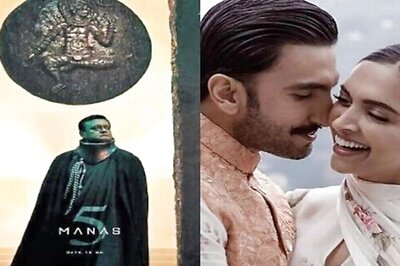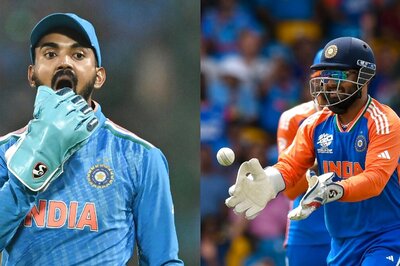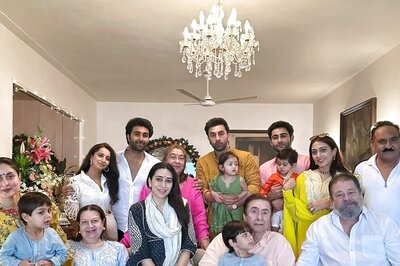
views
On several occasions in 2013 and early 2014, Mamata Banerjee was asked by media if she would support a Narendra Modi-led government at the Centre. Each time, she said no, but the speculation was alive for a reason. In a post-election scenario, foes can often become friends. This becomes particularly easy if the parties involved do not threaten each other’s political turf. That is why the question was repeatedly posed to leaders such as Mamata Banerjee, K. Chandrasekhar Rao and the late J. Jayalalithaa. If the Bharatiya Janata Party (BJP) stopped somewhere around 200 Lok Sabha seats, would they help make up the numbers? What if the BJP reaches 230? Does that change things?
Looking at the heated Bengal campaign of the Trinamool Congress (TMC) and the BJP today, this might seem unreal. And therein lies one of the most astounding stories of India after 2014. Never has the politics of a state so large been transformed so completely within such a short time. And the thing is, this happened almost entirely because of Mamata Banerjee’s political mistakes.
Allowing BJP to Grow
Consider the political chessboard after 2014. The TMC had won almost all the seats in West Bengal. Her traditional rival, the CPI(M), had been decimated both nationally and in the state. Mamata Banerjee had won the 2011 elections in alliance with the Congress party, leaving them a sizable 66 Assembly seats out of 294 to contest. But with just 44 Lok Sabha MPs, the Congress’ bargaining power in any future alliance was drastically reduced. Further, the non-TMC vote would be divided between the Left, the Congress and the BJP. In other words, the TMC was set to rule the state almost indefinitely, like the Left Front once did.
This is where Mamata Banerjee made her big political miscalculation. Instead of focusing on West Bengal, she picked the BJP as her political opponent. She began hammering them with her rhetoric. In the immediate aftermath of the 2014 elections, the most shrill anti-Modi rhetoric came not from the stunned Congress party, but the ‘victorious’ TMC.
ALSO READ| In the Hotly Contested Bengal Elections, Muslim Votes Can Make or Break Political Fortunes
Imagine the overwhelming winner in a state going past the next two parties (in terms of seats) and instead focusing all her attacks on a party that is a poor fourth. At the time, the BJP did not have a single MLA in the West Bengal Assembly. The TMC had 184.
What was the effect of this hammering? Each time Mamata Banerjee attacked the BJP, she raised their profile in the state. The effect was immediate. The BJP promptly entered the state assembly in September 2014, through a bypoll in Basirhat Dakshin constituency. This was the first BJP MLA in Bengal in over a decade.
Mamata’s Miscalculations
Of course, there were some calculations behind the miscalculation itself. After 2014 Lok Sabha polls, the TMC’s priority was to dump the Congress and go it alone in 2016 Assembly election. If you look more closely at the 2014 election results, you will see that the Congress won four Lok Sabha seats out of 42, but its vote share was less than 10 per cent. This is because the Congress votes were concentrated in a Muslim-dominated corridor around Malda and Murshidabad. By presenting itself as the bulwark against the BJP, the TMC expected to take these Muslim votes away from the Congress.
The other factor, of course, was ego. Mamata Banerjee wanted to be seen taking on the powerful Narendra Modi, not her feeble regional opponents.
For its part, the BJP was only too happy to raise its profile by playing on her mercurial temper and political ego. What was interesting was the difference in tone between the Modi rallies in Bengal in February 2014 and those in May 2014. In his February 2014 rally in Kolkata, Modi was noticeably soft on the TMC. He even said that Bengal could now possibly have three mascots: their own Pranab da as President, himself as the Prime Minister and Mamata Banerjee as the Chief Minister. By May 2014, the BJP was assured of winning nationally and the TMC was assured of winning Bengal. The rhetoric became much bitter on both sides. Speaking in Bankura and Asansol, Modi was heavily critical of the TMC. And Mamata Banerjee began referring to Modi as “danga babu” (riot man).
But Mamata Banerjee had a lot to lose in Bengal. The BJP only stood to gain. Today, the BJP stands on the verge in West Bengal, with a real chance of forming the government. To think that the BJP had just three seats out of 294 in the last Assembly election. Or, that it has been just six years since the BJP got its first MLA in Bengal Assembly after over a decade.
The Three Lessons
There are many lessons to be drawn from this story. The first is a lesson about political ego. The outsized ambition of the Bengal chief minister to go after Narendra Modi brought the BJP to her door. This ego is playing out even in the 2021 election and much to her disadvantage. Classically, the opposition tries to tie down the star campaigner on the other side within a local area. In Bengal, the chief minister has herself chosen a high-profile contest in Nandigram, putting a lot of her energy behind one seat out of 294!
ALSO READ| In Battle of Nerves, It Boils Down to Whether Hindu Hriday Samrat Can Trump Daughter of Bengal
The second is a lesson about never underestimating the presence of the BJP voter, or at least the BJP-inclined voter. In a number of states, mostly in the east, the north-east and the south, it is (or used to be) easy to pretend that there is no significant BJP voter. This false impression was furthered by wishful thinking among sections of the commentariat. The BJP, they said, was a party of Hindi-speakers, even upper-caste, Hindi-speaking vegetarians. As such, they argued that there were structural obstacles to the BJP expanding beyond the north and the west.
But seat shares can be deceptive. The BJP in 2016 won just one seat in Kerala Assembly, but its vote share was nearly 15 per cent. For comparison, Nitish Kumar-led JD(U)’s vote share in Bihar in 2014 was also a little over 15 per cent. In other words, the BJP is nearly as popular in Kerala as Nitish Kumar is in Bihar! Just because you don’t see the BJP winning seats everywhere does not mean they are not around. In many of the supposedly ‘impossible’ states, the BJP maintains a vote share of above 10 per cent. And under the right circumstances, this number can surge very quickly.
The final lesson is one from history. A number of commentators appear surprised at the BJP’s drastic gains in a state like West Bengal, which was supposed to be a hub of ‘secular-liberal’ politics. This is a deep misreading of the political history of Bengal, which always had a powerful undercurrent of Hindu assertion. Vande Mataram, the song from which the imagery of Bharat Mata is drawn, was written by Bankim Chandra Chatterjee in Bengali. Swami Vivekananda was from Bengal as well. When the Modi government abrogated Article 370 in 2019, they fulfilled the dream for which S.P. Mookerjee had laid down his life. For decades, the BJP has stirred up its cadres with the emotional slogan: Jahaan hue balidan Mookerjee, woh Kashmir hamara hai. In fact, K.B. Hedgewar, the founder of the Sangh, was educated and discovered his politics in Calcutta.
Years ago, staunch Communist Somnath Chatterjee had mockingly asked Sushma Swaraj to explain the concept of cultural nationalism. On the floor of Lok Sabha, Sushma Swaraj replied—it is when a Bengali Hindu names his son after a jyotirlinga in Gujarat (Somnath). Incidentally, Somnath Chatterjee happens to be the son of a prominent Hindu Mahasabha leader.
Two things are certain. In the 2021 Bengal election, the BJP will redeem a pledge it made a long time ago, if not completely, then at least substantially. The other thing is, the BJP rarely fights for the second place.
Read all the Latest News, Breaking News and Coronavirus News here


















Comments
0 comment